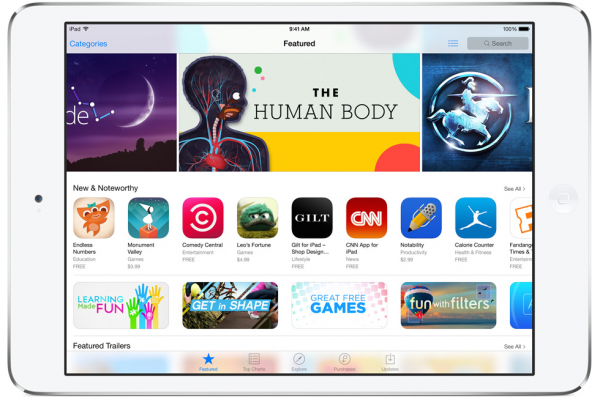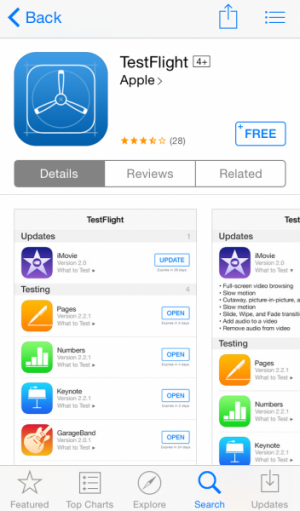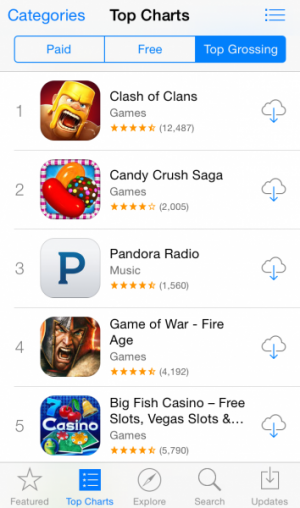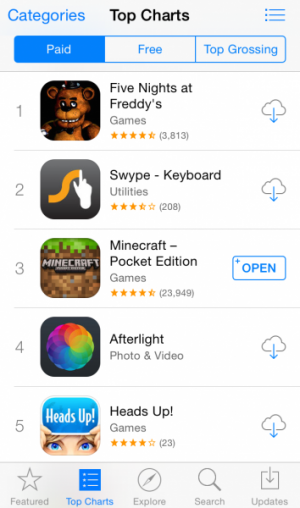For Better, or for Worse? How the New App Store has Started to Affect Developer Submissions
Many of these additions Apple has made to the App Store should result in friendlier shopping, but how has this been affecting developers?

With the release of iOS 8 (finally), Apple has made some noticeable changes on the App Store - bundles, videos, and Testflight integration, to name a few. Many of these additions will make things friendlier for App Store shoppers, but how has it been affecting developers? I asked George Ko (Quantum Sheep), Brandon Pollet (F5 Games), and Nadav B (NAFNA) what they thought of Apple’s changes to the developer submission process, and their answers were rather illuminating.
Surprise! The Rules Have Changed!
[caption id="attachment_250143" align="alignright" width="150"] George Ko[/caption]With all the changes to the App Store that had been announced back in June when Apple officially revealed iOS 8, it’s not all that shocking to think that there might be a few more boxes to check off when submitting a new app. However, it seems as though there wasn’t a whole lot of forewarning.
George Ko[/caption]With all the changes to the App Store that had been announced back in June when Apple officially revealed iOS 8, it’s not all that shocking to think that there might be a few more boxes to check off when submitting a new app. However, it seems as though there wasn’t a whole lot of forewarning.
According to Pollet, “I didn’t have any real warning about the submission changes. I’m sure the information was out there but I just happened to log into iTunes Connect last week and the entire interface was different.” Nadav had a similar story, and said, “we have been given access to iOS beta 2 as of June 20, yet, as to submission guidelines, I can find no info.”
“I think that, while Apple transitions from the old system it had, there will be some mistakes and oversights made,” Ko offered, “This is understandable, but it kinda sucks to be uncertain about things when trying to get a game out!”
Spot the Difference
[caption id="attachment_250142" align="alignleft" width="149"] Brandon Pollet[/caption]The more significant changes Apple has made to the process include the ability to upload gameplay videos directly to App Store descriptions, as well as Testflight builds. Things still seem a bit unclear as to what’s absolutely necessary, though.
Brandon Pollet[/caption]The more significant changes Apple has made to the process include the ability to upload gameplay videos directly to App Store descriptions, as well as Testflight builds. Things still seem a bit unclear as to what’s absolutely necessary, though.
“I haven’t run into any trouble with the new submission rules but that may be because I’m not sure what they all are,” said Pollet, “I have found that when building an app bundle there are limits to your pricing options based on the current price of the games within the bundle. I had no idea that was the case until I was halfway through the submission process.” Nadav also admitted that he was unaware of any changes, “To be honest, I have not looked at the app submission guidelines for a long time.”
Ko, meanwhile, was confused by the apparent need to submit a Testflight build to Apple, “In fact, I’m not even sure it is a requirement,” he admitted. “The whole Testflight component has really just muddied the water for me in terms of what I need to submit and what provisioning profiles I should use.”


The Inevitability of Change
[caption id="attachment_250144" align="alignright" width="150"] Nadav B[/caption]Understandably, all of these changes could have an impact on how developers submit their work in the future. Ko recently ran into a problem with Game Center support when he submitted his latest project to Apple. “It has Game Center stuff in it, but Apple claimed it didn’t,” he said, “It seems like an oversight more than anything, so making use of the review notes to try and second guess what Apple reviewers might miss will become more common, I think.”
Nadav B[/caption]Understandably, all of these changes could have an impact on how developers submit their work in the future. Ko recently ran into a problem with Game Center support when he submitted his latest project to Apple. “It has Game Center stuff in it, but Apple claimed it didn’t,” he said, “It seems like an oversight more than anything, so making use of the review notes to try and second guess what Apple reviewers might miss will become more common, I think.”
Nadav believes the biggest adjustment will be keeping their development version as up-to-date as possible so as to remain consistent with Apple’s requirements. “This is time/energy/money consuming,” he said, “but it is our choice to compete in an ever-changing environment. Constant change and updates are part of the game”.
“I think that bundles could be a great addition to the store,” Pollet said, “but I imagine that it might take a couple revisions before Apple irons out the best way to provide the bundles and market them effectively. The limits on pricing are an interesting move for Apple to make and could end up making it difficult for developers to bundle and sell their apps precisely the way they want.”
How’d You Find That?
Discoverability on the App Store has also been a constant problem for independent developers. As to whether or not these adjustments will change that, “We are working under the ‘thinking’ that we wont be featured by Apple,” Nadav said, “and that visibility depends on us, our efforts, and the quality of our coming game.”“I’m not sure there’ll be a change in visibility,” Ko agreed, “but I think there will be a change (I hope!) in player purchasing, mainly due to developers being able to add a video to their app description now.” And of course, this is a sentiment that Pollet echoed. “The app preview videos will help developers to communicate what their game is all about,” he said, “and hopefully increase downloads.”
Pollet also hopes that bundles will allow developers to stand out and reach a larger audience. “I’m also really glad that Apple brought back the scrolling search results list in the App Store,” he added, “The single result per screen interface was horrible and really killed long tail app discovery.”


Newbies Still Welcome
With all these policy changes, won’t that make things a bit tougher for new and aspiring iOS developers? Nadav doesn’t think it’ll be all that different, but there are other options out there for those who run into problems. “I cant comment for others,” he said, “but for us, keeping to Apple’s standards is one of our challenges. Developing for Apple is a choice,” he continued, “If any developer doesn’t like Apple’s policies, or the App Store marketplace, they can go to Android, Flash, Steam, Playstation, Xbox, etc.”“I think some people will feel that adding a build for Testflight to the submission first is another obstacle to getting their games out,” Ko said, “Previously, sending a build to Testflight was instant and you could then share it immediately with testers. As I understand it, there’ll now be a Testflight wait time for review before you ever get near the ‘released’ game wait time (7-10 days on its own),” he lamented, “Personally, I’d rather have faster review times so I can react faster to any mistakes I’ve made when submitting a game to Apple.”
Pollet, on the other hand, is still uncertain of how the changes will influence new developers, “but after we submit our new game later this month,” he added, “I may have a different story to tell.”